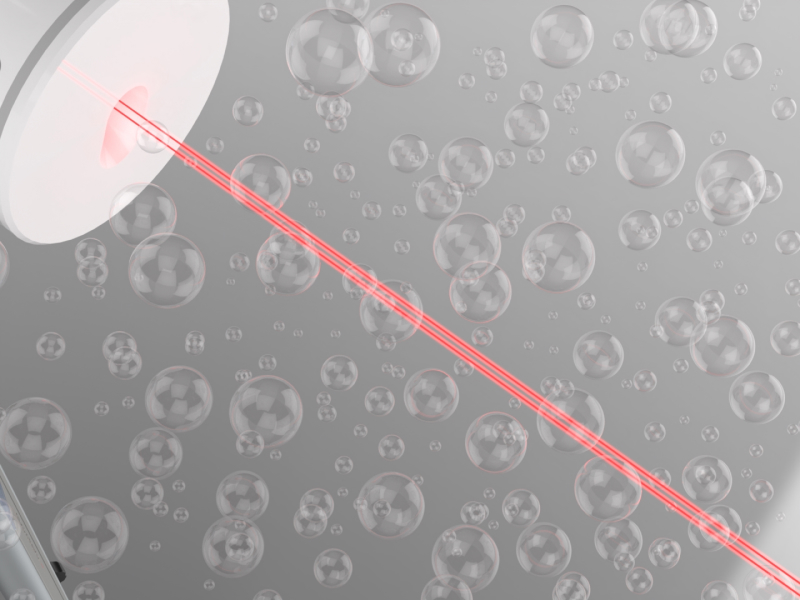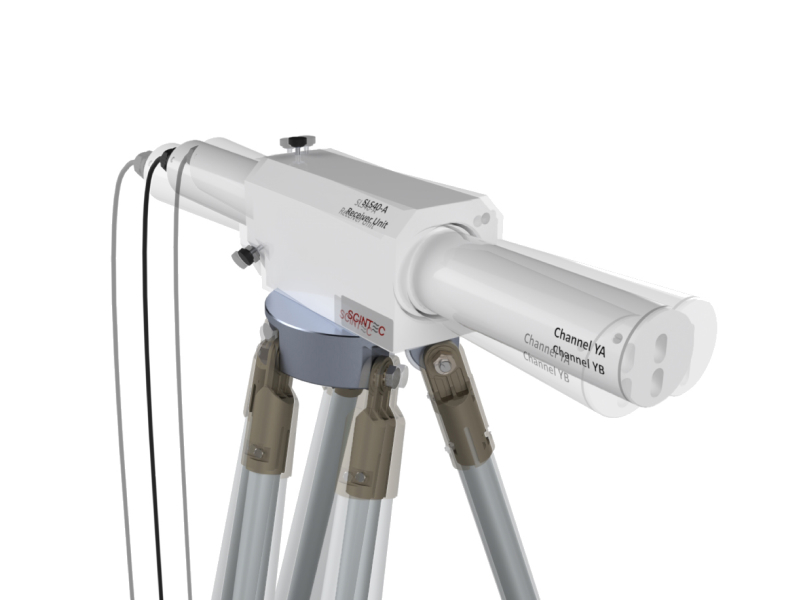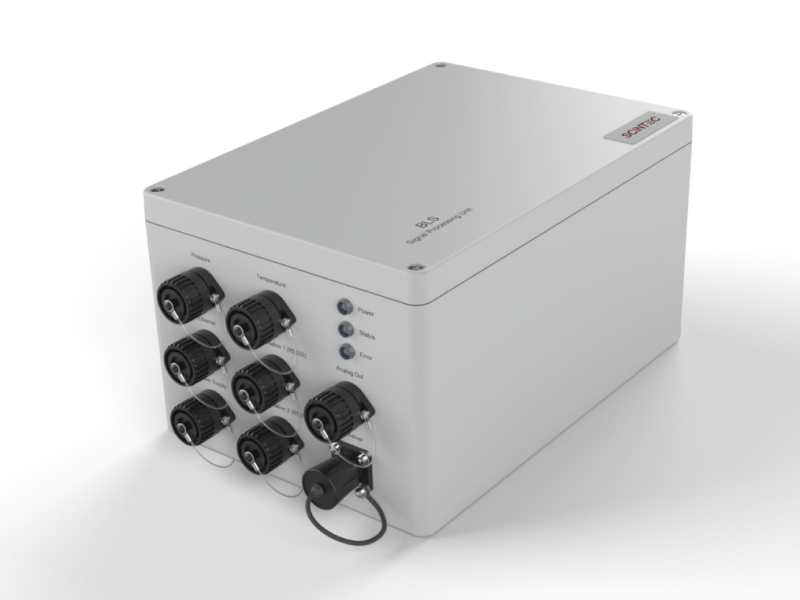The Scintec SLS Series Scintillometers are unique sensors which can measure atmospheric turbulence, heat flux, momentum flux and crosswind by purely optical means. The length of the measurement paths between the transmiiter and the receiver can be set up between 50 m and 250 m. Combined with a net radiometer, the SLS Series Scintillometers can determine the evaporation or evapotranspiration.
The models of the Scintec SLS Series are so-called inner-scale scintillometers. By measurering the spatial turbulence spectrum, they can directly asses the dissipation rate of turbulent kinetic energy. By application of Monin-Oboukhov similarity, this directly leads to the turbulent fluxes of heat and momentum without any complementing wind measurements or assumptions on surface roughness. Only the SLS Series Scintillometers provide the full set of assessible information purely from optical measurements: the structure function constant of refractive index Cn2, the structure function constant of temperature CT2, the turbulent flux of heat, the turbulent flux of momentum, the inner scale of turbulence, the kinetic energy dissipation rate and the crosswind. If combined with a net radiometer, evaporation or evapotranspiration is also determined.
All SLS Series Scintillometers ES are eye safe Class 1 laser products.

The Surface Layer Scintillometer for stable platforms or heavy tripods on solid ground.

The Surface Layer Scintillometer with beam steering which permits operation when manual beam alignment is undesirable or difficult.

The Surface Layer Scintillometer for operation on towers or other platforms prone to vibration.

The Surface Layer Scintillometer for operation on towers or other platforms prone to vibration or longterm-drift.











